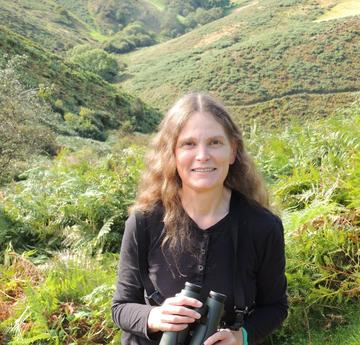Graduate Research - Michaelmas 2021
Ellen Baker

The majority of bees are fully reliant on the pollen and nectar supplied by flowers to feed themselves and their offspring. In the same way that humans can’t survive on bread alone, bees must obtain a diet that is nutritionally balanced and fulfills all their physiological requirements. Pollen is nutritionally complex and contains a range of macronutrients such as proteins and fats, which are necessary for bee growth and maintenance, as well as micronutrients such as vitamins and minerals. However, not all flowers produce equally valuable pollens and bees will be selective in their choice of food plant. Therefore, as plant communities change and species are lost, nutritional resources important for bees may also become absent. The challenge is we still don’t know the pollen nutritional quality of many different floral species and so are unable to understand the consequences of these changes. My research is therefore seeking to increase our understanding of the nutritional resources available from different floral pollens and analyse which are best suited to fulfilling the needs of different UK bumblebee species. This means that during the summer I mostly focus on collecting pollen and bee samples from the field, and in the winter, analysing their nutritional content. The long-term hope for this research is that it can be used alongside other nutritional data to assess the suitability of planting schemes and interventions designed to benefit bumblebees and identify key floral resources in different plant communities.
John Dave C. Aquino

Denise Wawman

Flat flies (also known as louse flies) are a group of avian ectoparasites which, although familiar to bird ringers and wildlife rescuers, are rarely seen away from their hosts. Related to tsetse flies, they have a similar lifecycle: females allow a single larva to develop within their uterus to the point of pupation, while feeding it from a “milk gland”.
I am interested in the UK species’ potential to be vectors of avian diseases in the UK. Some members of this family of insects are known to vector a wide range of diseases, including some zoonoses that, with climate change and increased global travel, have the potential to reach the UK.
The first step is to update the distribution and phenology of this neglected group, using specimens collected by British Trust for Ornithology licensed bird ringers, acting as expert citizen scientists for the “2021 Mapping the UK’s Flat Flies Project”, and data obtained in my role as the National Recorder for the Hippoboscidae (flat flies and keds). However, since the last identification guide was written, DNA barcoding has found evidence of what were thought to be North American species in Europe. These species have a very similar appearance to UK species, so a thorough review of the taxonomy will be essential in the early stages of this project.
Jacques Bouvier

In my D. Phil based in the Department of Plant Sciences, I seek to harness the tools available in the current computational and synthetic biology era in order to enhance plant carbon assimilation and photosynthesis. If successful, the ultimate application of this work would be aimed toward increasing the productivity of our key agricultural crop plants.
To date, one fundamental topic of research which I have explored in the Kelly lab has been centred around the enzyme rubisco, the principal carbon fixing enzyme which sits at the centre of photosynthesis. Specifically, I have been interested to better understand the enigmatic paradox of why this enzyme, which is of paramount importance to fitness, is a relatively inefficient catalyst. Previously, it has been thought that catalytic trade-offs have limited the optimisation of rubisco, with this belief based on a series of observations of severe antagonistic correlations between rubisco kinetic traits. However, by taking a novel phylogenetic perspective on this long-standing question, I have demonstrated that rubisco kinetic trait correlations are weak when the phylogenetic context and evolutionary history of the studied rubisco are taken into consideration. This means that natural selection has in fact been able to optimise the kinetic traits of rubisco largely independent of one other, despite previous assertions of this not being the case. In the lab, we think that these weak catalytic trade-offs create substantial scope for enhancing photosynthesis through rubisco engineering.

